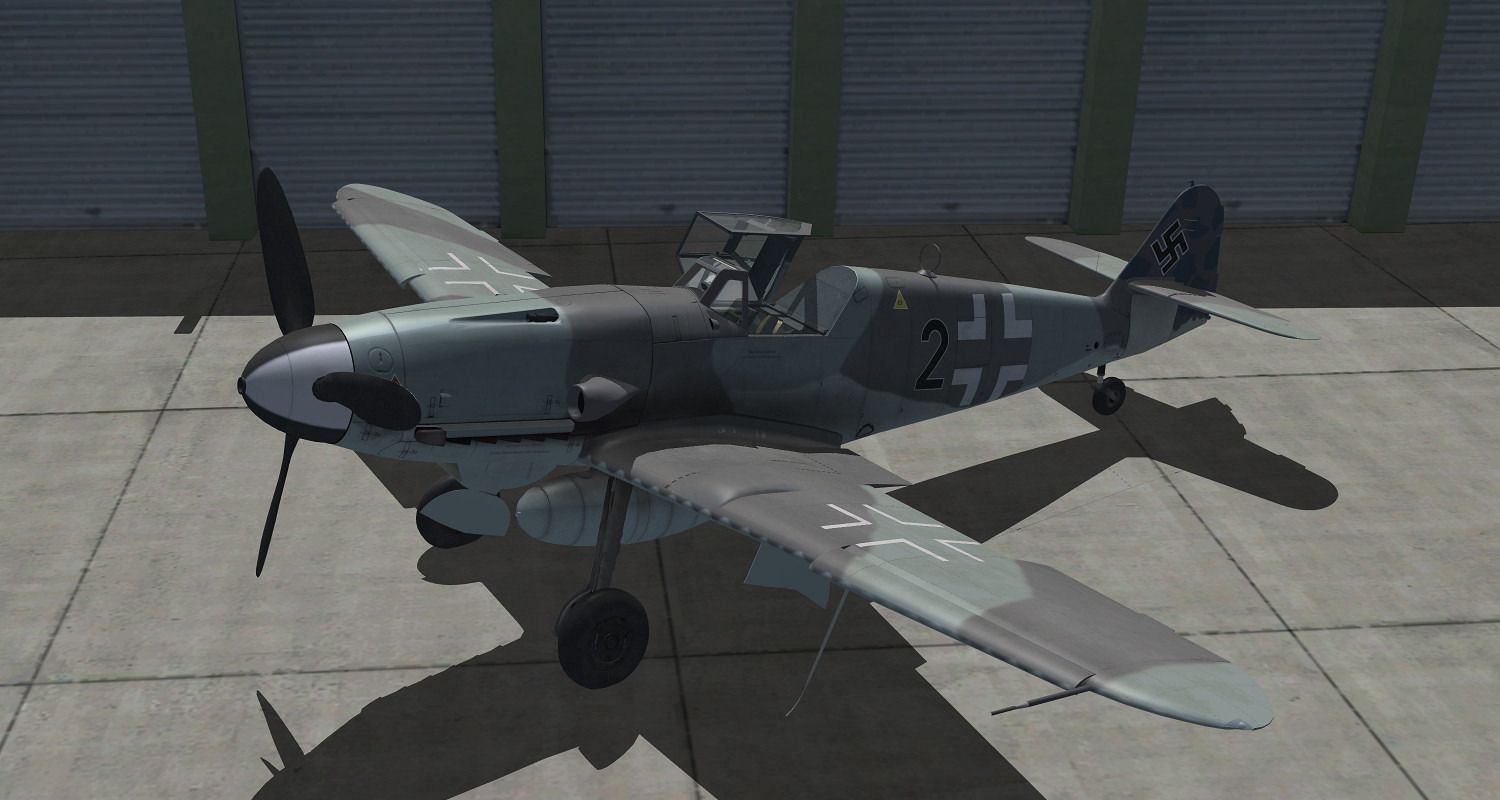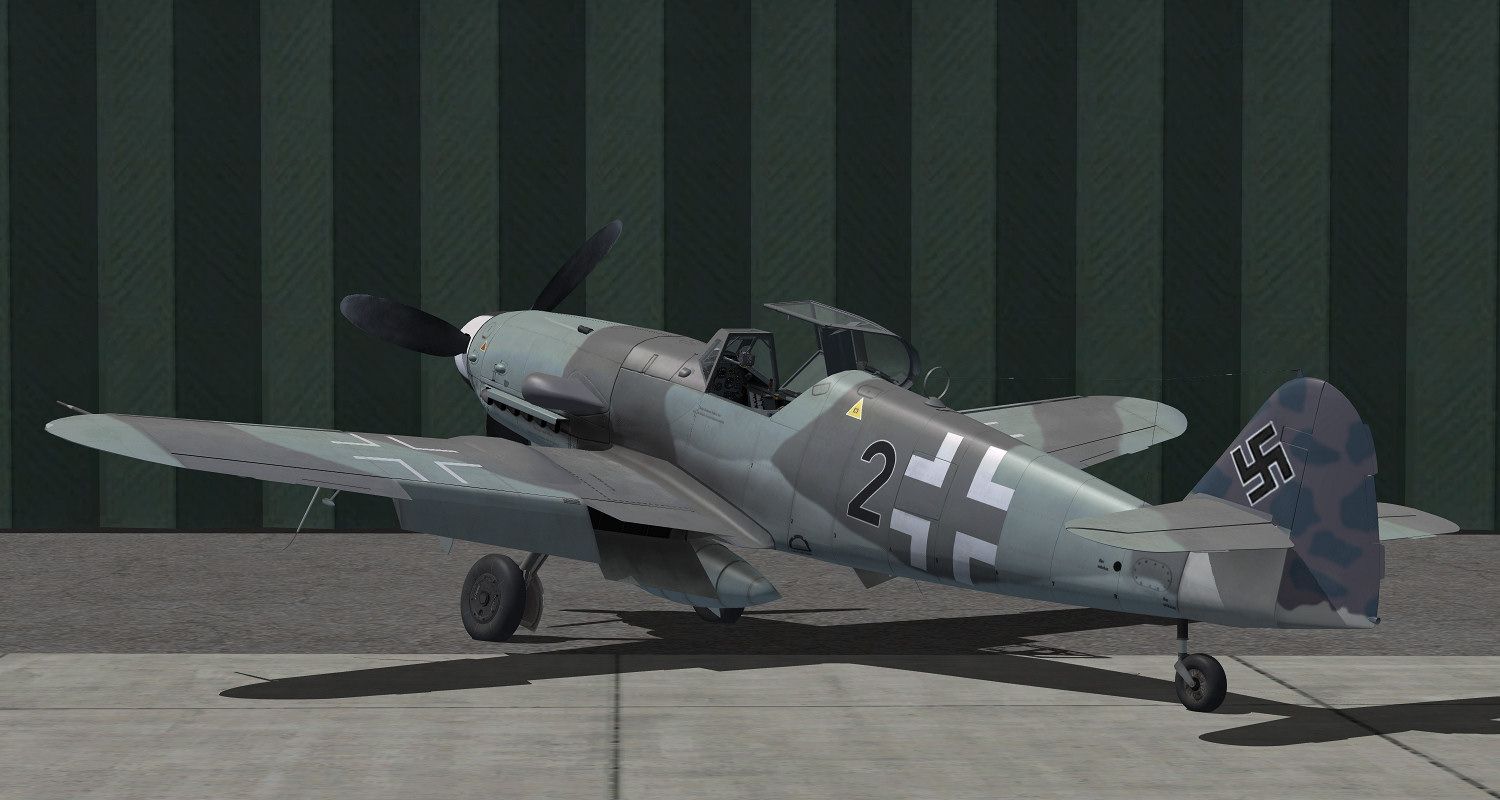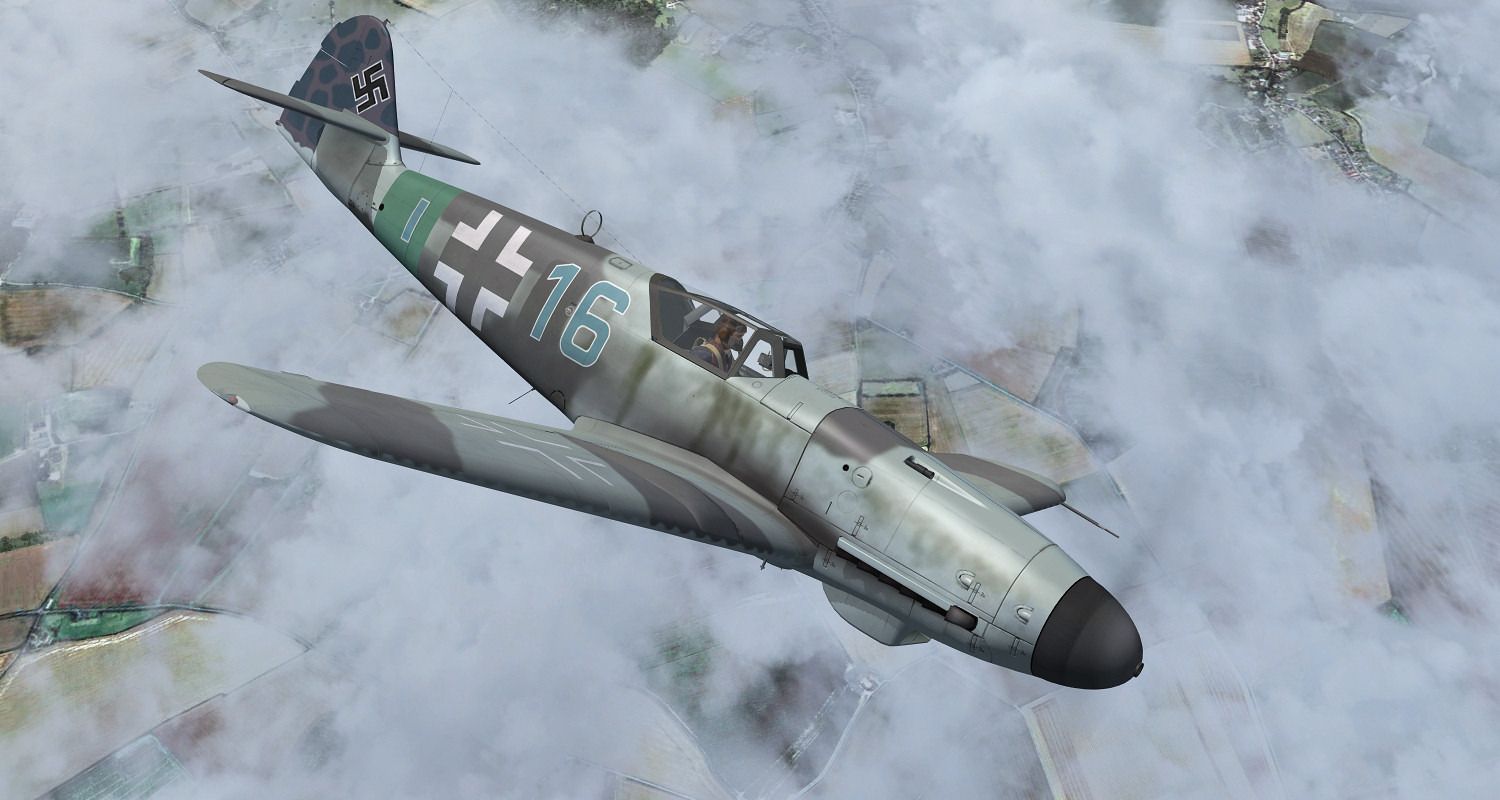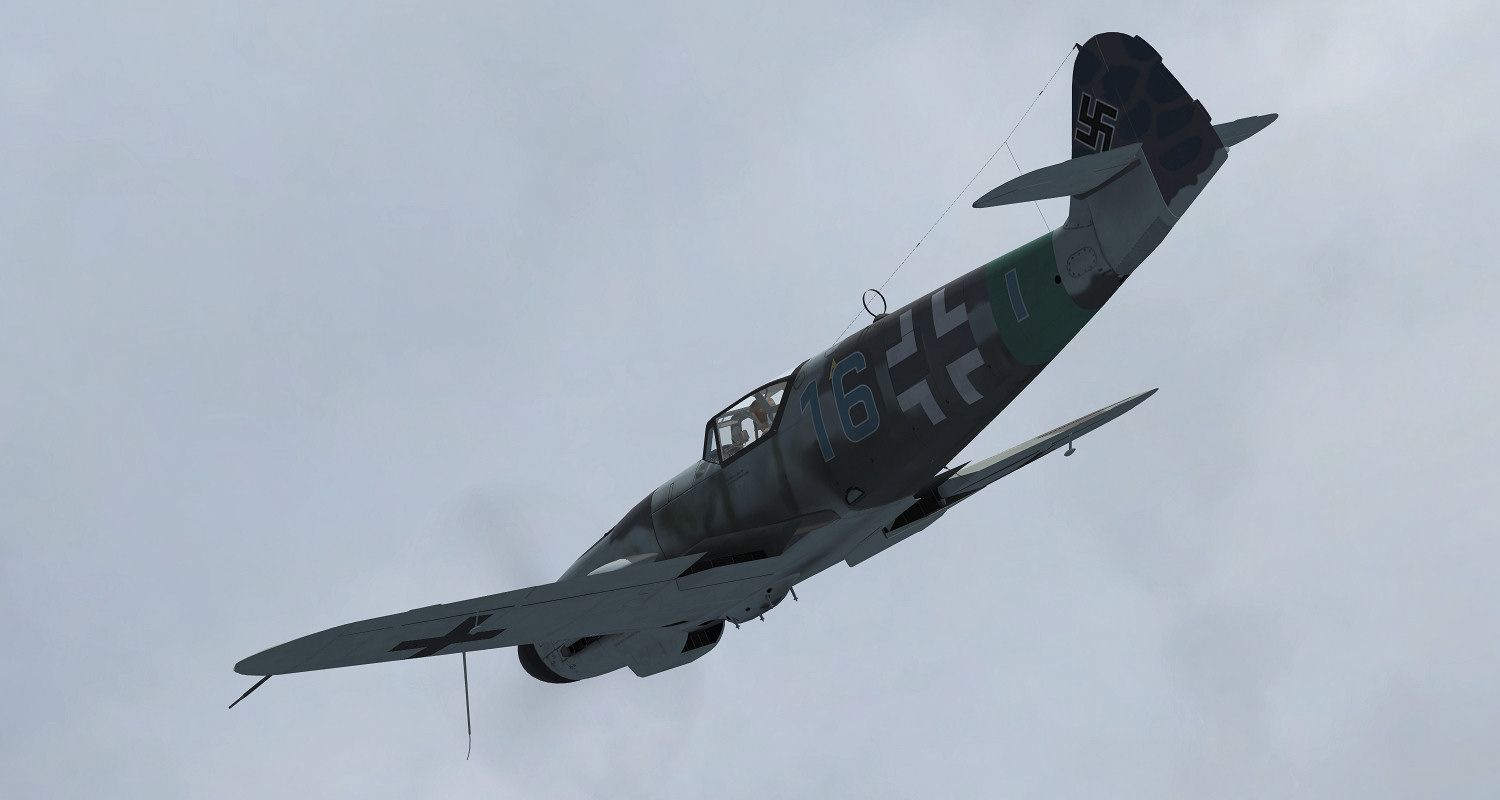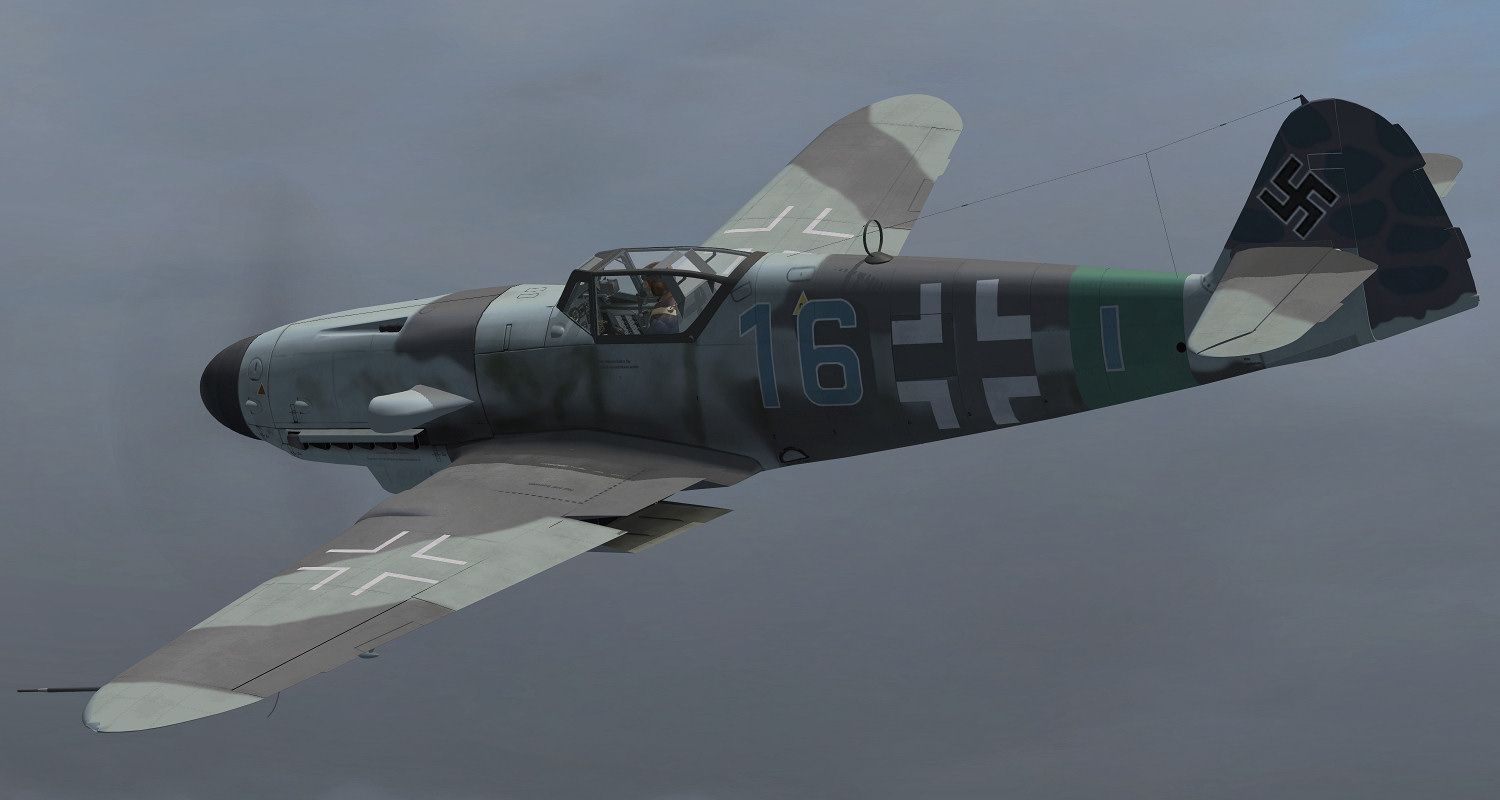In regards to the flight model and handling, it is just as superb as the visuals. Once you get past the takeoff and landing characteristics of the '109, which often seem to be the most talked about handling qualities of the aircraft, through all of the pilot reports I have read, in the air the aircraft is an absolute sweetheart to fly, with gobs of power in a lightweight airframe, with little to no vices, just requiring attention to stay on the ball (as in any high-performance single engine WWII fighter). On the ground, I have also always read that, unlike other tail-dragger fighters of the period, it needs brakes, both in landing and especially when turning. Unlike something like the Spitfire, which will nose over when brakes are on and even modest power, pilots describe the need to use a good amount of brakes while rolling out from landing. They also always highlight what it takes to turn the aircraft on the ground, which usually involves good bursts of power, with the stick pushed forward, rudder deflection, and a lot braking in the direction of the turn. All of these items are very, very well replicated. When landing, it is important to use proper airspeeds, which may seem very low to some. It's not a wheel-landing type of aircraft, with three-pointers being ideal. From one pilot report in particular, even though the author seemed to sweat-out his entire first flight with the aircraft, by the time the engine shut down, he was eager to fill the tank again and go for another flight, having found the handling and thrill of the aircraft better than he had read or heard about prior.
